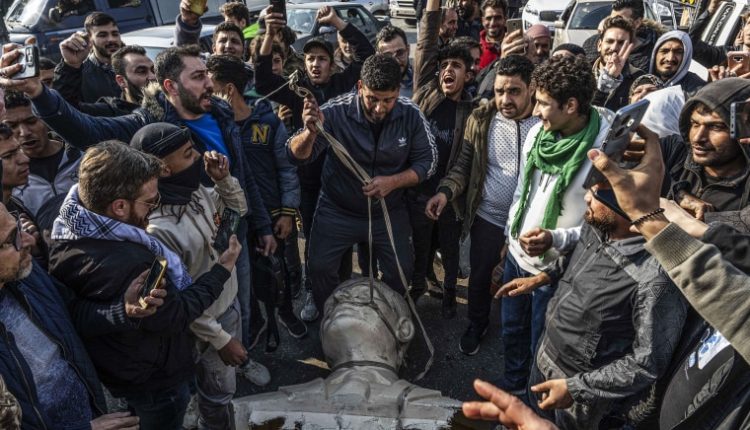Eight months after the collapse of Bashar al-Assad’s regime on December 8, 2024, Syria remains gripped by violence and insecurity, with the Syrian Observatory for Human Rights (SOHR) documenting 9,889 deaths across the country by August 6, 2025. Among the victims, 7,449 were civilians, including 396 children and 541 women, reflecting the ongoing fragility of Syria’s security situation and the severe risks faced by vulnerable populations.
Breakdown of Casualties
The SOHR’s report details the human toll from December 8, 2024, to August 6, 2025, attributing the deaths to persistent violence, violations by local and foreign actors, and widespread security chaos. The casualties are distributed as follows:
- December 2024: 2,354 deaths, including 1,894 civilians (1,839 men, 21 women, 34 children) and 460 non-civilians.
- January 2025: 1,122 deaths, including 679 civilians (480 men, 146 women, 53 children) and 443 non-civilians.
- February 2025: 603 deaths, including 435 civilians (347 men, 46 women, 42 children) and 168 non-civilians.
- March 2025: 2,644 deaths, including 2,069 civilians (1,828 men, 144 women, 97 children) and 575 non-civilians.
- April 2025: 452 deaths, including 352 civilians (287 men, 40 women, 25 children) and 100 non-civilians.
- May 2025: 428 deaths, including 295 civilians (227 men, 19 women, 49 children) and 133 non-civilians.
- June 2025: 391 deaths, including 360 civilians (304 men, 31 women, 25 children) and 31 non-civilians.
- July 2025: 1,733 deaths, including 1,225 civilians (1,076 men, 89 women, 60 children) and 508 non-civilians.
- August 2025 (until August 6): 162 deaths, including 140 civilians (124 men, 5 women, 11 children) and 22 non-civilians.
Circumstances of Civilian Deaths
The SOHR reported that civilian deaths resulted from various causes, including:
- 320 deaths from indiscriminate gunfire and infighting.
- 1,750 deaths under unknown circumstances.
- 866 deaths by gunfire from the Military Operations Department.
- 590 deaths by unidentified gunmen.
- 571 deaths from war remnants, such as unexploded ordnance.
- 60 deaths from torture in Military Operations Department prisons.
- 58 deaths from mine and explosive device detonations.
- 55 deaths from vehicle-borne improvised explosive devices.
- 34 deaths attributed to ISIS.
- 32 deaths from Israeli airstrikes.
- 129 deaths from Turkish airstrikes.
- 17 deaths by the Syrian Democratic Forces (SDF).
- 4 deaths by Jordanian border guard fire.
- 2 deaths by Turkish gendarmerie fire.
- 1 death due to poor living conditions.
Field Executions and Sectarian Violence
A hallmark of this period is the rise in field executions and identity-based killings, with the SOHR documenting 2,535 cases, predominantly in March 2025 during massacres along the Syrian coast, where 1,726 executions occurred. These acts, described as “brutal,” often targeted individuals based on their sectarian or communal affiliations.
The violence in Suweida has been particularly severe, with a UN report noting 191,000 internally displaced persons and the closure of the Damascus-Suweida road, exacerbating the humanitarian crisis. The SOHR also documented 928 deaths in Suweida in July 2025 alone, including 250 field executions, involving children and women, raising serious questions about justice and accountability.
Lack of Accountability
Despite the staggering death toll, accountability remains elusive. The SOHR criticized a fact-finding committee established to investigate the coastal massacres for failing to deliver results consistent with the facts. Meanwhile, further atrocities have unfolded in regions like Suweida. The organization also highlighted orchestrated media campaigns by pro-government factions that promote sectarian and inflammatory rhetoric, falsely linking communities such as Alawites, Druze, and Kurds to political stances to undermine documentation efforts and obstruct transitional justice.
These campaigns have fueled division, with accusations labelling Alawites as “regime remnants,” Druze as “collaborators,” and Kurds as “separatists,” further complicating efforts to achieve stability and justice in post-Assad Syria.
This article was translated and edited by The Syrian Observer. The Syrian Observer has not verified the content of this story. Responsibility for the information and views set out in this article lies entirely with the author.


